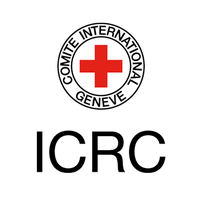The Tug of War in Ukraine: A Battlefield of Strategy and Consequence
September 14, 2024, 3:36 am

Location: Switzerland, Geneva
Employees: 10001+
Founded date: 1863

Location: United Kingdom, Wales, Newport, Wales
Employees: 1001-5000
Founded date: 1954

Location: United States, District of Columbia, Washington
Employees: 1001-5000
Total raised: $500K
The conflict in Ukraine has morphed into a complex chess game, with each move reverberating across borders. As Russia claims a counter-offensive victory in the Kursk region, the stakes rise. The battlefield is not just a physical space; it’s a theater of strategy, diplomacy, and dire humanitarian consequences.
On September 12, 2024, Russia announced it had recaptured territory in the Kursk region. This came after Ukraine launched a bold incursion into Russian territory on August 6, marking the largest foreign military action on Russian soil since World War II. The audacity of Ukraine's move caught Moscow off guard, igniting a fierce counter-offensive.
Ukrainian President Volodymyr Zelenskyy acknowledged the Russian response, stating that Moscow's troops were indeed striking back. The situation is fluid, a dance of advances and retreats. Ukraine's strategy appears to be twofold: to divert Russian forces and to gain leverage in future negotiations. The territory seized is not just land; it’s a bargaining chip in a high-stakes game.
The U.S. and its allies are caught in the crossfire. Washington's current policy restricts Ukraine from using Western-supplied weapons to strike deep into Russian territory. This limitation has become a point of contention. Zelenskyy argues that the delay in easing these restrictions allows Russia to reposition its military assets further from the front lines. The clock is ticking, and every moment counts.
In response, Russian President Vladimir Putin issued a stark warning. He cautioned that any easing of restrictions on Ukraine's use of long-range weapons could escalate the conflict, potentially drawing NATO into a direct confrontation with Russia. The rhetoric is sharp, underscoring the delicate balance of power. A misstep could ignite a larger war, one that neither side desires but both seem to be edging toward.
The humanitarian toll of this conflict is staggering. As military operations intensify, civilians bear the brunt. Reports of shelling in eastern Ukraine have resulted in tragic losses, including the deaths of aid workers. The International Committee of the Red Cross condemned these attacks, labeling them as war crimes. The humanitarian crisis deepens, with infrastructure crumbling and basic necessities becoming scarce.
In the Donetsk region, the situation is dire. Russian forces have cut off water supplies to key cities, exacerbating the suffering of civilians. The war is not just a battle of armies; it’s a war against the very fabric of daily life. People are caught in a relentless cycle of violence, their lives disrupted by the whims of military strategy.
Meanwhile, the geopolitical landscape shifts. U.S. Secretary of State Antony Blinken has promised to review Ukraine's requests for more flexibility in using Western weapons. This decision could alter the dynamics of the conflict. However, President Joe Biden remains cautious, wary of actions that could provoke a direct confrontation with nuclear-armed Russia. The stakes are high, and the consequences of miscalculation could be catastrophic.
As winter approaches, the urgency of the situation escalates. Russia has ramped up air attacks on Ukraine, targeting energy infrastructure. The looming cold season adds another layer of complexity. Without adequate energy supplies, the civilian population faces an uphill battle for survival. The conflict is not just about territory; it’s about the very essence of life.
The international community watches closely. The U.S. and UK are discussing how to support Ukraine while avoiding a broader conflict. The balance of power hangs by a thread. Each decision made in the halls of power reverberates on the ground, impacting the lives of countless individuals.
In this high-stakes game, every move is scrutinized. The battlefield is a chessboard, with each side strategizing its next play. Ukraine seeks to maintain momentum, while Russia aims to reclaim lost ground. The world holds its breath, waiting to see how this complex narrative unfolds.
As the conflict drags on, the human cost continues to rise. Families are torn apart, communities shattered. The war in Ukraine is a stark reminder of the fragility of peace. The echoes of gunfire resonate far beyond the front lines, affecting lives in ways that statistics cannot capture.
In conclusion, the situation in Ukraine is a multifaceted crisis. It’s a clash of military might, a struggle for survival, and a test of international resolve. The tug of war continues, with each side vying for control. The world watches, hoping for a resolution but bracing for the possibility of escalation. The future remains uncertain, a canvas yet to be painted by the hands of fate.
On September 12, 2024, Russia announced it had recaptured territory in the Kursk region. This came after Ukraine launched a bold incursion into Russian territory on August 6, marking the largest foreign military action on Russian soil since World War II. The audacity of Ukraine's move caught Moscow off guard, igniting a fierce counter-offensive.
Ukrainian President Volodymyr Zelenskyy acknowledged the Russian response, stating that Moscow's troops were indeed striking back. The situation is fluid, a dance of advances and retreats. Ukraine's strategy appears to be twofold: to divert Russian forces and to gain leverage in future negotiations. The territory seized is not just land; it’s a bargaining chip in a high-stakes game.
The U.S. and its allies are caught in the crossfire. Washington's current policy restricts Ukraine from using Western-supplied weapons to strike deep into Russian territory. This limitation has become a point of contention. Zelenskyy argues that the delay in easing these restrictions allows Russia to reposition its military assets further from the front lines. The clock is ticking, and every moment counts.
In response, Russian President Vladimir Putin issued a stark warning. He cautioned that any easing of restrictions on Ukraine's use of long-range weapons could escalate the conflict, potentially drawing NATO into a direct confrontation with Russia. The rhetoric is sharp, underscoring the delicate balance of power. A misstep could ignite a larger war, one that neither side desires but both seem to be edging toward.
The humanitarian toll of this conflict is staggering. As military operations intensify, civilians bear the brunt. Reports of shelling in eastern Ukraine have resulted in tragic losses, including the deaths of aid workers. The International Committee of the Red Cross condemned these attacks, labeling them as war crimes. The humanitarian crisis deepens, with infrastructure crumbling and basic necessities becoming scarce.
In the Donetsk region, the situation is dire. Russian forces have cut off water supplies to key cities, exacerbating the suffering of civilians. The war is not just a battle of armies; it’s a war against the very fabric of daily life. People are caught in a relentless cycle of violence, their lives disrupted by the whims of military strategy.
Meanwhile, the geopolitical landscape shifts. U.S. Secretary of State Antony Blinken has promised to review Ukraine's requests for more flexibility in using Western weapons. This decision could alter the dynamics of the conflict. However, President Joe Biden remains cautious, wary of actions that could provoke a direct confrontation with nuclear-armed Russia. The stakes are high, and the consequences of miscalculation could be catastrophic.
As winter approaches, the urgency of the situation escalates. Russia has ramped up air attacks on Ukraine, targeting energy infrastructure. The looming cold season adds another layer of complexity. Without adequate energy supplies, the civilian population faces an uphill battle for survival. The conflict is not just about territory; it’s about the very essence of life.
The international community watches closely. The U.S. and UK are discussing how to support Ukraine while avoiding a broader conflict. The balance of power hangs by a thread. Each decision made in the halls of power reverberates on the ground, impacting the lives of countless individuals.
In this high-stakes game, every move is scrutinized. The battlefield is a chessboard, with each side strategizing its next play. Ukraine seeks to maintain momentum, while Russia aims to reclaim lost ground. The world holds its breath, waiting to see how this complex narrative unfolds.
As the conflict drags on, the human cost continues to rise. Families are torn apart, communities shattered. The war in Ukraine is a stark reminder of the fragility of peace. The echoes of gunfire resonate far beyond the front lines, affecting lives in ways that statistics cannot capture.
In conclusion, the situation in Ukraine is a multifaceted crisis. It’s a clash of military might, a struggle for survival, and a test of international resolve. The tug of war continues, with each side vying for control. The world watches, hoping for a resolution but bracing for the possibility of escalation. The future remains uncertain, a canvas yet to be painted by the hands of fate.